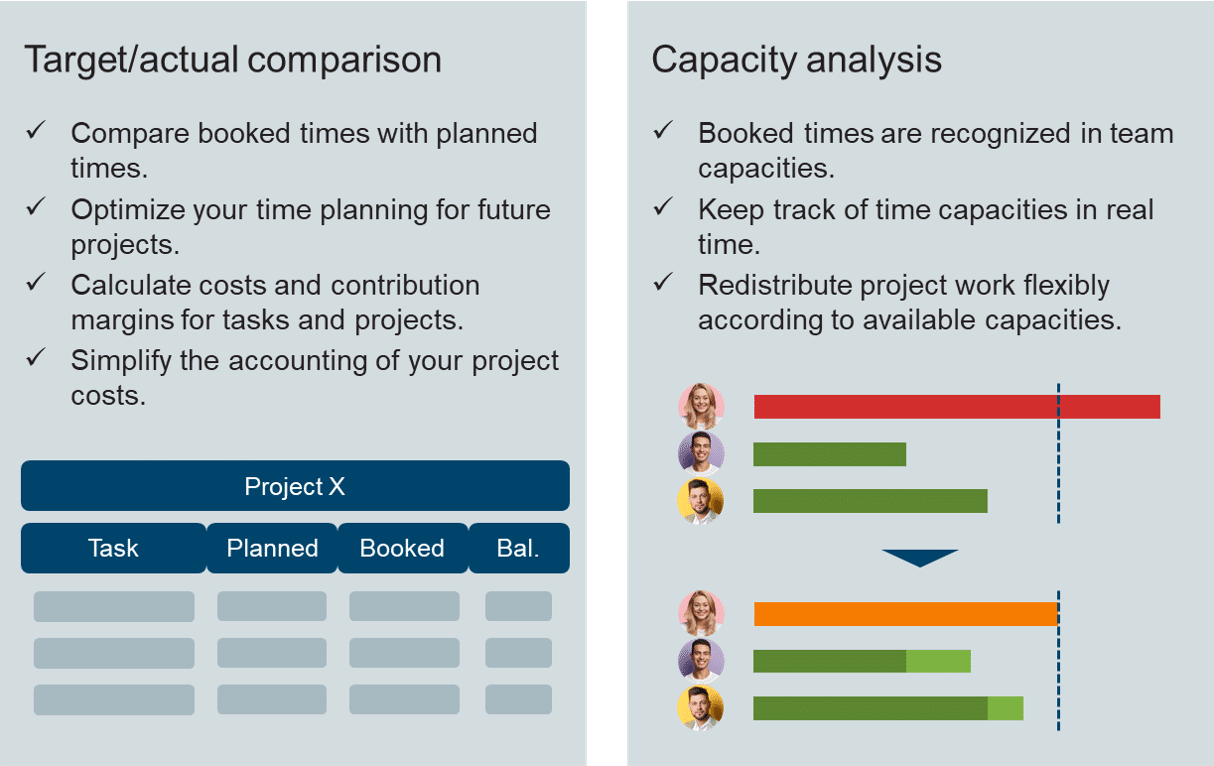Capacity planning plays an important role in project management. Service providers have to consider very different types of capacities: Budget, time, material resources, man-days, etc.
The overriding goal is to allocate existing resources to your projects as efficiently as possible. Ideally, two conditions should be met for this:
Naturally, the ideal case outlined can usually only be achieved approximately, as not all capacities are known to their full extent and in sufficient detail before the start of the project. Also during the project, imponderables or changes often arise that need to be reacted to flexibly.
Nevertheless, sound resource planning carried out in advance creates a solid foundation on which you can more easily recognise and implement any need for change. Software like projectfacts supports you in this.
Capacity planning with projectfacts
As a comprehensive project management tool, projectfacts offers you everything you need to be able to fully plan capacities for your projects. This includes the following options in particular:
The latter two points in particular offer you considerable advantages when managing capacities. By having your employees record project times and book them to work packages, you can compare planned and booked times (target/actual comparison) and use them to calculate contribution margins.
You can also keep an eye on the hourly quotas of your employees in this way. With the help of the capacity analysis, you can recognise workloads in the course of the project and reallocate work packages if necessary. This allows you to use the hourly quotas in your team as effectively as possible.
For capacity planning, projectfacts offers you a great deal of creative freedom. To make the most of this, it is important to clarify your wishes and expectations before the concrete planning.
For this purpose, we present you with a series of central questions with which you can set up capacity planning entirely according to your needs. The guiding questions facilitate your later planning and protect you from unpleasant surprises in the course of the project.
There are two areas in particular where you have different scope for design: the level of detail in planning and the distribution of authorisations. The beauty of projectfacts is that you don’t have to make a project-wide or even system-wide commitment here. No, you can also flexibly combine different ways.
How detailed should the planning be?
Should the capacities be planned to the day or is a monthly value sufficient?
In both cases, the utilisation of the employees can be seen. Daily and monthly values each have their own advantages in terms of presentation. You are free to choose which method suits your processes better. Of course, this is not an “either-or” question. Both types of scheduling can also be combined without any problems.
At which project level should capacities be created? Main project, sub-project or work package?
You have the choice whether to link capacities to projects. If you do, you have the advantage that projectfacts offers more evaluation options in the capacities. For example, the system can compare planned times with the actual project times booked. In this way, you can track whether the planning is being adhered to.
It is up to you which project level you link the capacities to. All ways have their advantages. Work packages enable more targeted planning, but you need more capacities overall. Main projects reduce the required number of capacities, but only allow for less specific planning. Here, too, a combination of all methods is of course possible.
What should the authorisations of the capacities look like?
Who creates capacities?
Which person/group is responsible for creating capacities in your company? Who decides from which project a capacity is created, or which budgets and team divisions apply in a capacity?
Who creates shift plans?
Who determines the operational plans in a created capacity? Does the project manager do this, for example, or are the employees allowed to decide for themselves what their plan should look like?
Who edits shift plans?
Who can change a shift plan once it has been created? Is only the project manager authorised to do this or can the employees also change their scheduling?
Who sees capacities?
Who can access all capacity information? Who gets an overview of all employees and their workload? Do employees only see their own workload or can they also access the workload of colleagues, e.g. from the same team?


